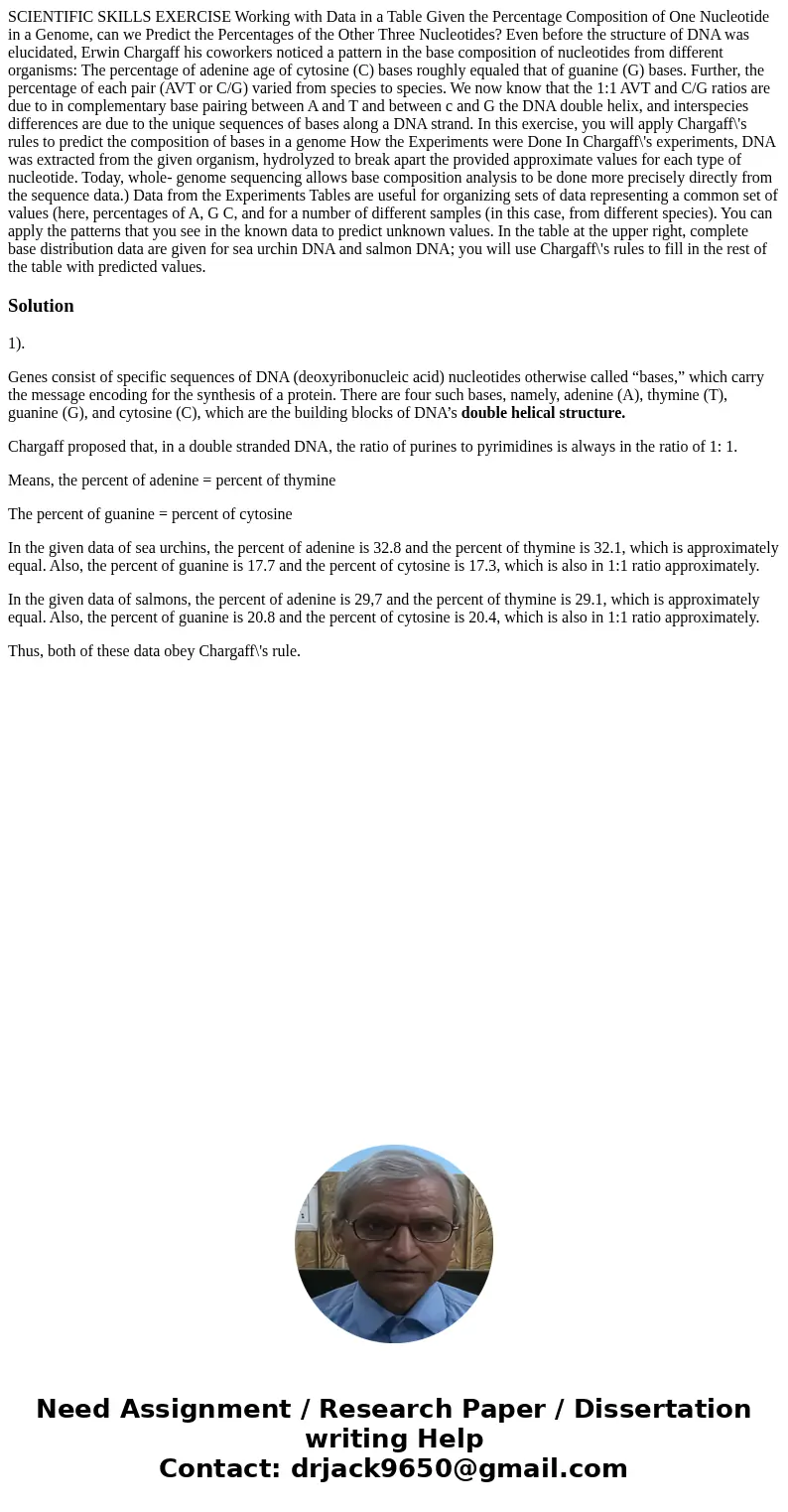SCIENTIFIC SKILLS EXERCISE Working with Data in a Table Given the Percentage Composition of One Nucleotide in a Genome, can we Predict the Percentages of the Other Three Nucleotides? Even before the structure of DNA was elucidated, Erwin Chargaff his coworkers noticed a pattern in the base composition of nucleotides from different organisms: The percentage of adenine age of cytosine (C) bases roughly equaled that of guanine (G) bases. Further, the percentage of each pair (AVT or C/G) varied from species to species. We now know that the 1:1 AVT and C/G ratios are due to in complementary base pairing between A and T and between c and G the DNA double helix, and interspecies differences are due to the unique sequences of bases along a DNA strand. In this exercise, you will apply Chargaff\'s rules to predict the composition of bases in a genome How the Experiments were Done In Chargaff\'s experiments, DNA was extracted from the given organism, hydrolyzed to break apart the provided approximate values for each type of nucleotide. Today, whole- genome sequencing allows base composition analysis to be done more precisely directly from the sequence data.) Data from the Experiments Tables are useful for organizing sets of data representing a common set of values (here, percentages of A, G C, and for a number of different samples (in this case, from different species). You can apply the patterns that you see in the known data to predict unknown values. In the table at the upper right, complete base distribution data are given for sea urchin DNA and salmon DNA; you will use Chargaff\'s rules to fill in the rest of the table with predicted values.
1).
Genes consist of specific sequences of DNA (deoxyribonucleic acid) nucleotides otherwise called “bases,” which carry the message encoding for the synthesis of a protein. There are four such bases, namely, adenine (A), thymine (T), guanine (G), and cytosine (C), which are the building blocks of DNA’s double helical structure.
Chargaff proposed that, in a double stranded DNA, the ratio of purines to pyrimidines is always in the ratio of 1: 1.
Means, the percent of adenine = percent of thymine
The percent of guanine = percent of cytosine
In the given data of sea urchins, the percent of adenine is 32.8 and the percent of thymine is 32.1, which is approximately equal. Also, the percent of guanine is 17.7 and the percent of cytosine is 17.3, which is also in 1:1 ratio approximately.
In the given data of salmons, the percent of adenine is 29,7 and the percent of thymine is 29.1, which is approximately equal. Also, the percent of guanine is 20.8 and the percent of cytosine is 20.4, which is also in 1:1 ratio approximately.
Thus, both of these data obey Chargaff\'s rule.

 Homework Sourse
Homework Sourse